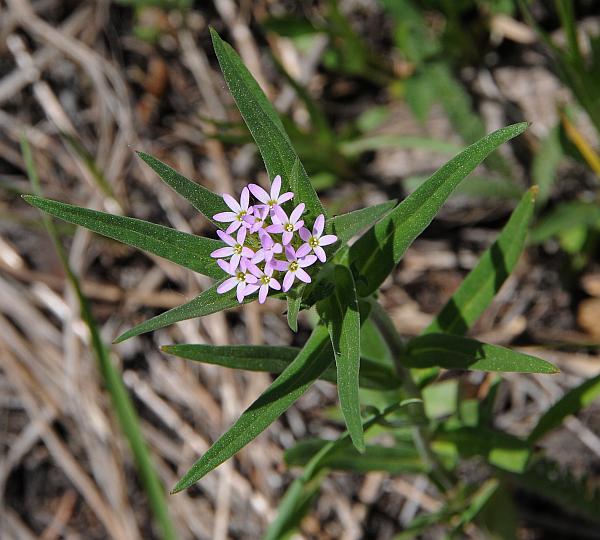Collomia linearis Nutt.
Collomia

Introduced
CC = *
CW = 5
MOC = 1
© SRTurner
Collomia linearis Nutt.Collomia | |
 |
Introduced CC = * CW = 5 MOC = 1 |
© SRTurner |
|
Family - Polemoniaceae Habit - Taprooted annual forb. Stem - Erect, to 60 cm, pubescent with fine hairs especially toward tip. Leaves - Alternate, simple, entire, sessile, with single midvein. Lower leaves linear to lanceolate. Upper stem leaves lanceolate to ovate, pointed at tip, bases somewhat clasping. Abaxial surface with short, often glandular hairs along midvein.
Inflorescences - Terminal and axillary, headlike clusters surrounded by leafy bracts.
Calyx - 5-lobed to about midpoint, 4-7 mm long at flowering, elongating at fruiting, narrowly bell-shaped. Calyx lobes triangular, glandular-hairy. Corolla - 5-lobed, white to pink, trumpet-shaped. Tube 8-15 mm long, lobes 1-4 mm long. Stamens unequal. Anthers mostly included.
Fruits - Longitudinally dehiscent capsules. Seeds 3, 2.0-2.5 mm long, oblong-ovoid, slightly flattened, with a shallow longitudinal groove along 1 side and usually a minute winglike ridge at each end, the surface brown, smooth to faintly and finely wrinkled, becoming sticky when moistened. Flowering - May - August. Habitat - Pastures, open disturbed areas, potentially railroads. Origin - Native to the western U.S. Lookalikes - None. Other info. - This inconspicuous relative of the phloxes is very rare in Missouri, possibly no longer occurring in the state at all, or present only as a sporadic waif. The plant is only known in Missouri from a single historical collection, from Marion County in 1918. It is quite common in the western half of the U.S., where it is native. It can be easily recognized by its tubular phlox-like flowers, alternate leaves, and generally diminutive appearance. Photographs taken along the Little Muddy Creek, southwest of Bear Mountain, CO, 6-26-2018, and in Rocky Mountain National Park, Larimer County, CO, 7-6-2019 (SRTurner). |